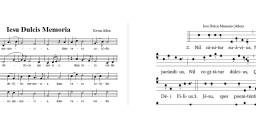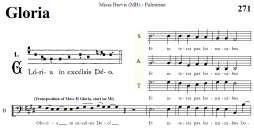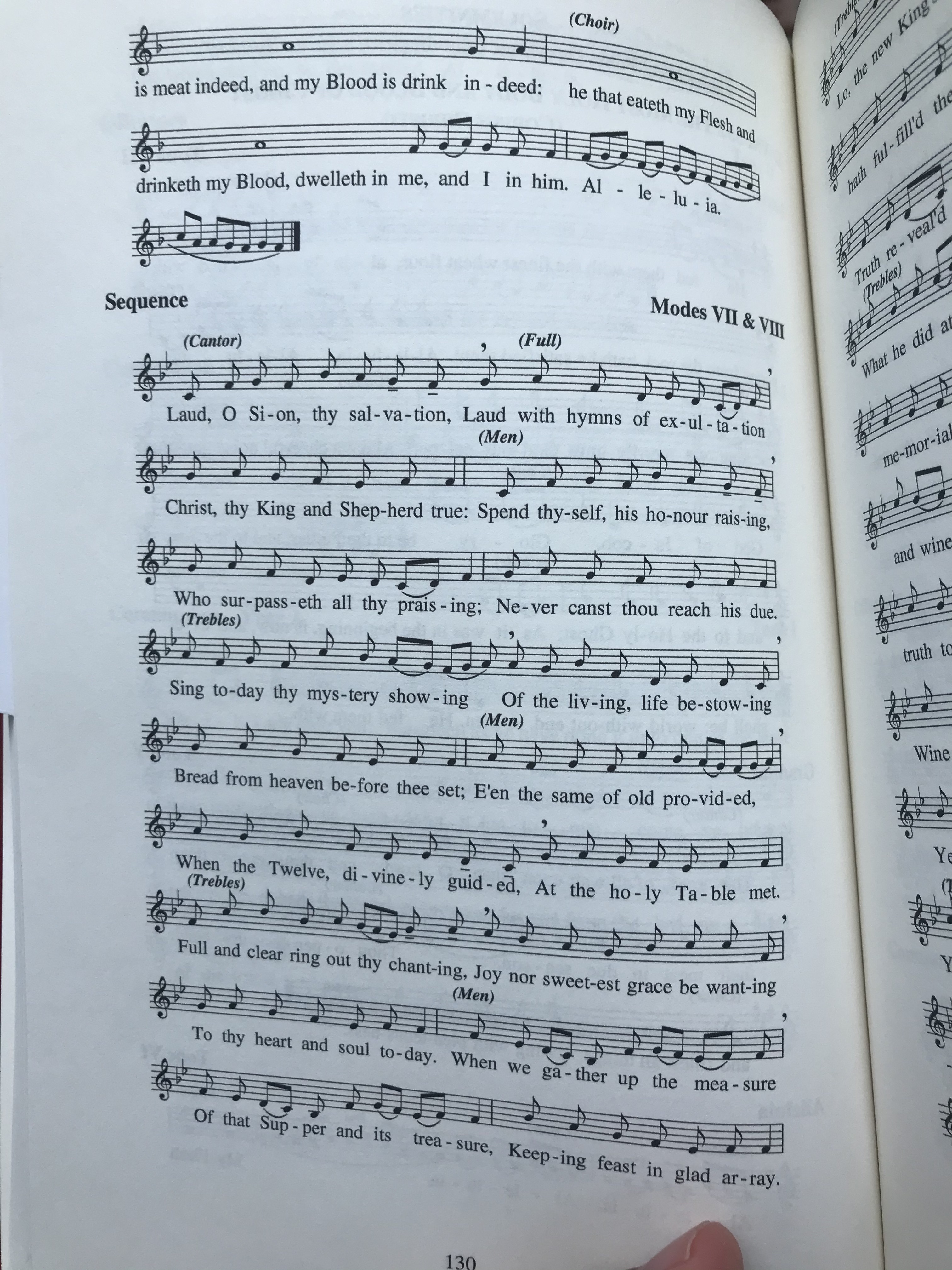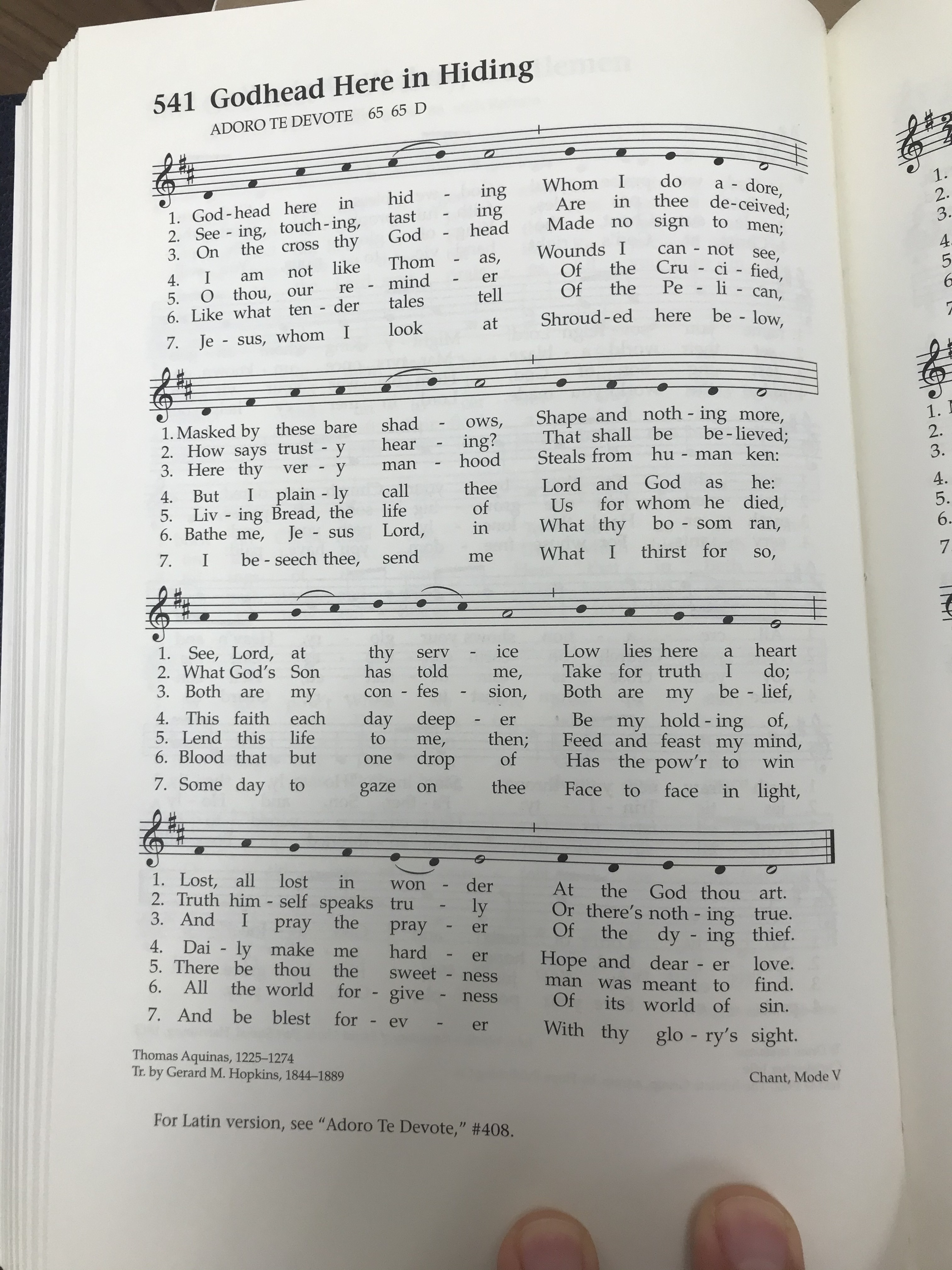Tutorial: Gregorian chant in MuseScore.
-
Regards.
I have created this tutorial to write Gregorian chant in modern notation in MuseScore. It is in Spanish and English. The English translation was done in Google Translator. If someone wants to help me improve the translation, write me to the email that appears in the tutorial.
Below I will put some examples made with this technique.
 Eng_Gregorian_chant_in_MuseScore.pdf8M
Eng_Gregorian_chant_in_MuseScore.pdf8M
 Canto_gregoriano_en_MuseScore_Espanol.pdf8M
Canto_gregoriano_en_MuseScore_Espanol.pdf8M -
These are two examples made in MuseScore. The Kyrie of the Missa de Angelis and the Graduale of the 17th Sunday after Pentecost.

 Missa_de_Angelis_Kyrie.pdf47K
Missa_de_Angelis_Kyrie.pdf47K
 Dominica_XVII_post_Pentecosten_Graduale.pdf54KThanked by 1Incardination
Dominica_XVII_post_Pentecosten_Graduale.pdf54KThanked by 1Incardination -
Very neat and helpful. Thanks. However, is there a way to put and use Gregorian chant notation using Musescore? That would be even better...
-
Greetings.
Thank you, Andrew, for your comment. No. Unfortunately in MuseScore it is not possible to use square notation. -
I have an interest in creating chant notation alongside modern notation in one score. I'm guessing Lilypond should be able to do that?
It would wonderful if the graphical entry programs could support chant notation easily - one developer at Dorico said they'd like to, but it may take many years since the demand is very low. -
If you want to write music in chant notation, it seems that GABC is the best way to go with a number of tools (mostly free) available.
If you are looking to merge modern and chant, that can be done with graphics in a music program - I typically use Finale, but I would be surprised if most don't have similar capacity.
Attached is an example from Iesu Dulcis (Allen). When I do intonations for polyphonic Masses, I always include the snippet of the intonation in chant as well as the music so one can see the transition of pitch from the intonation to polyphony and understand where it is derived from. Also attached an example of that.

 Iesu Dulcis.png1576 x 564 - 131K
Iesu Dulcis.png1576 x 564 - 131K
 Sample Intonation.png1483 x 747 - 105K
Sample Intonation.png1483 x 747 - 105K -
The explanation is very clear and the English is excellent with just a few rough spots:26. What we will do is subdivide each phrase into small measures. This will allow us to distribute
more efficient andthe notes in each system more efficiently and
elegant
elegantly.
39. To add ties and slurs where they are needed, select the notesbind the notes with a bow, anywhere necessary, the notes are selectedby pressing at the same time the «Ctrl» key is pressed. Thenitpress the «S» key.
48. With the help of the mouse or the keyboard we locate said can place the line in the position we need.
50. Once the transcripttion is completed,the letter is added. We will see that aspectlyrics [or underlay] can be added, as we will see in the next section. We proceed in the same way with the rest of the score. Below we showa comparative[comparison], by way of example, ofthe development of the first systems next to the model. Remember that it is recommended to add theletter at the same time it advances by fragments.underlay as you go.
3.INCOMEINPUT OF LYRICS. -
Thanks, Richard, for your corrections.
-
m_r_taylor - yes Lilypond can do both, though I haven't tried it. Another thing I know is possible is to embed Lilypond into the free word processors Open Office and Libre Office. The extension OoLilypond works in both, I have recently checked it still works, but have not used it for about five years.Thanked by 1Juan Andrés
-
...is there a way to put and use Gregorian chant notation using Musescore?
@AndrewSteinerPiano So it turns out it is possible to do this. It isn't easy. At all.
Most of the Gregorian note shapes have been included into Unicode. This means that they can be inserted into scores from the Master Palette (Shift+F9). They are, however, just symbols, with no real meaning on the score. It is possible to attach them to notes to get their placement on the stave, but as soon as you're dealing with neumes of more than one note, the task becomes exponentially more difficult.
Attached is a pdf of a score I made. I wanted the Gregorian tone 8g for the odd verses of the Magnificat to pair with a Magnificat Octavi Toni by Lassus. To make it easier to sing the chant at the correct pitch, I decided to attempt writing the Gregorian notation on modern staves, similar to the Weinmann Graduale. The results were actually quite satisfactory, but this was largely because the chant was simple, and once I had the handful of necessary neumes placed once, I could copy and paste them as often as needed. The forum software won't allow me to upload the .mscz file, so it is available on Google Drive here.
I have also attached the finished product for those who may want it - I stole a score for the Lassus from CPDL, broke apart the pdf, and interpolated the chant verses I created.
 Magnificat chant Tonus 8 - odd.pdf25K
Magnificat chant Tonus 8 - odd.pdf25K
 Lassus_Magnificat_octavi_toni.pdf782K
Lassus_Magnificat_octavi_toni.pdf782K -
I have done it with Lilypond a number of years ago. It works for syllabic hymns like the notation in the English Hymnal, but if there are any long melismas, the square notes and the modern notation don’t match well. Plus square notation entry is terribly complicated in Lilypond.
Just give up on square notes and do it all in stemless modern notation. That’s what should have been done with chant all along... -
No disrespect to the OP, but can I politely suggest to NOT use stemmed 8th notes when transcribing to modern notation? Simple stemless heads with slurs are much easier to read. 8th note notation was the fashion many years ago however it is difficult to read and seems mostly spurned by modern publications that adapt chant.
-
I respectfully disagree about using eighth-note stemming/beaming for Gregorian chant melodies. While there is something appealingly clean about stemless notes, I find that for longer melodies, particularly very melismatic ones, the stems/beams are very helpful for seeing groups of notes — indeed, much like the shapes of the original neums themselves — instead of just reading long strings of single notes, and then occasionally getting lost ("where am I in this forest of stemless noteheads?").Thanked by 1John_F_Church
-
CGM, I agree that long melismas require attention from an engraver, however if they are done well and placed into their proper groupings somewhat akin to how the nuemes are shaped themselves, they are easier to read. (I suppose I should edit in here: a lot easier for me to read anyway.) 8th stems all over the place, especially when you have one stem per syllable make the rest of the chant a bear to read.
I'll also add that individual stemming is frowned upon by engravers for regular vocal music too. Elain Gould talks about this specifically in the "bible" Behind Bars. So it doesn't make any sense to me to use an old convention that is increasingly considered anathema by professional publishing houses for chant.Thanked by 1John_F_Church -
As an example, I think this is terribly difficult and cluttered to read:

Whereas this is much easier:

 IMG_9059 dont do this.jpg3024 x 4032 - 2M
IMG_9059 dont do this.jpg3024 x 4032 - 2M
 IMG_9060j.jpg3024 x 4032 - 2M
IMG_9060j.jpg3024 x 4032 - 2M -
Stemmed vs stemless is a taste thing. The benefit to stemmed is that it translates into metrical value, with some indication of motion. It’s sort of old solesmes, but the in my experience the stemless notation lends itself to a vagueness of interpretation by musicians not trained in chant. They wander and give it no forward motion.Thanked by 1JonathanKK
-
ServiamScores - your first example is very poor typesetting. How could anyone set showing in the middle of the page, like that?
-
I don't know... but that's a pretty standard example of what I encounter whenever there's stemmed notation.
Davido, what you laud (rhythm indication) is precisely one of the things that detracts from the merits of stemmed notation... chant is supposed to follow the rhythm of speech, not be sung mathematically. Now of course, we've all been trained to some extent to put particular inflections on certain neumes thereby creating a "standard" rhythm, but by the same token, if you use the mathematical approach with stems I doubt your chant will have much flow at all.
If you can decipher a triple pulse from three notes beamed together, I can't fathom why you couldn't decipher that with three stemless grouped and slurred.
I concede that there's a certain element of visual taste at play here, but I do think the stemmed notes really lay a difficult trap for people who don't know chant very well. It's inevitable that habits from modern music will sink in.
Stemless notation. on the other hand, immediately indicates that there are different rules from 'normal' but those rules are still easily inferred. (notes with dots or white notes are longer, slurred groups are sung together, etc. etc.) I'll also note that stemless notes are actually quite a bit closer to the original neumes themselves.
At any rate, I don't think I'm winning any converts here, and we will all do whatever we esteem best for our choirs. Singing chant, no matter how it's transcribed, is the important part.
Edit: one other general thought for anyone finding this thread in the future: I don't understand why some modern editions of chant forgo the hierarchical nature of gregorian barlines, most of which are easily represented in modern notation programs. They reveal more data. I very much prefer to represent the original barlines unaltered insofar as is possible in my program of choice, and then as my choir grows, I reveal new aspects about how the music is transcribed layer by layer, barlines being one of them.Thanked by 1a_f_hawkins -
Adding slurs to beaming is overkill and perhaps clutter, but I don't consider one trickier than the other.
'Gregorian barlines' are an anachronism, the bogusbonus data being decisions made by an editor. Useful if you happen to agree with them, of course, but often distracting in, for example, the American Gradual where they have been 'respected' in seeming disregard for the new language. -
Agree. I don't use the old-school "you can't beam notes together unless they're melismas" approach (e.g. Serviam's first example above), but instead beam the notes of the chant melody in 2's and 3's, to match the way that chant is frequently explained to singers — "the melody flows in irregular groupings of 2's and 3's, which are reflected in the beaming."The benefit to stemmed is that it translates into metrical value, with some indication of motion.
Agree even more!Singing chant, no matter how it's transcribed, is the important part. -
Regards.
It is not the object of this post to discuss which method of transcription of the plain chant is better, so I will not speak about it. What should be taken into account is that the method that I have developed solves the problems of distribution and spacing of the notes that I have not seen in any forum or tutorial.
If you do not want to see the stems of the notes, you can disable their display by right-clicking on the bar and unchecking the respective box in the measure options.Thanked by 1GerardH -
m_r_taylor, a LaTeX document can invoke both Lilypond and Gregorio, so it could contain a mix of modern and square-note scores.
-
Juan Andrés, did you consider adding extender lines to the text under the melismas?
-
@chonak I hadn't considered it, but it can certainly be very useful.
https://musescore.org/en/handbook/lyrics#melisma
Welcome to the MusicaSacra Forum!
To participate in the discussions on Catholic church music, sign in or register as a forum member, The forum is a project of the Church Music Association of America.
Categories
- All Discussions21,111
- General Music Discussion8,219
- Job Openings197
- Management of Music Programs850
- Choral Matters533
- Church Documents and Rubrics524
- CMAA Notes302
- Events716
- For Newcomers: Read First26
- Sacred Polyphony546
- Hymnody872
- Gregorian Chant: General2,698
- ↳ Graduale Romanum and Liber Usualis368
- ↳ Graduale Simplex60
- ↳ Semiology63
- Vernacular Plainsong696
- Anglican Use and Anglican Chant68
- Organ, Other Instruments and Repertoire435
- New Composition/Works in Progress1,291
- Recordings232
- Music for Hispanic Ministry159
- Music Education: Children211
- Music Education: General222
- News Items245
- Positions Wanted2
- General Discussion: Catholicism739
- Amusements177
- General Discussion1,034
- Opinions117



